Abstract
Twenty nine patients aged 15-35 years (mean 23) with tricuspid atresia and normally related great arteries were studied; 20 are alive. Ten patients who had had a Fontan operation (group 1) were compared with 10 patients with palliative shunts (9) or no surgery (1) (group 2). Patients were graded according to their ability to lead a normal life (ability index). Patients in group 1 tended to have a better ability index, a greater exercise capacity, and fewer social and extracardiac problems than those in group 2. The mean left ventricular ejection fraction measured by radionuclide angiography was the same in both groups. Arrhythmias were equally common in both groups; they appear to be age related and they occur independently of left ventricular function.
Full text
PDF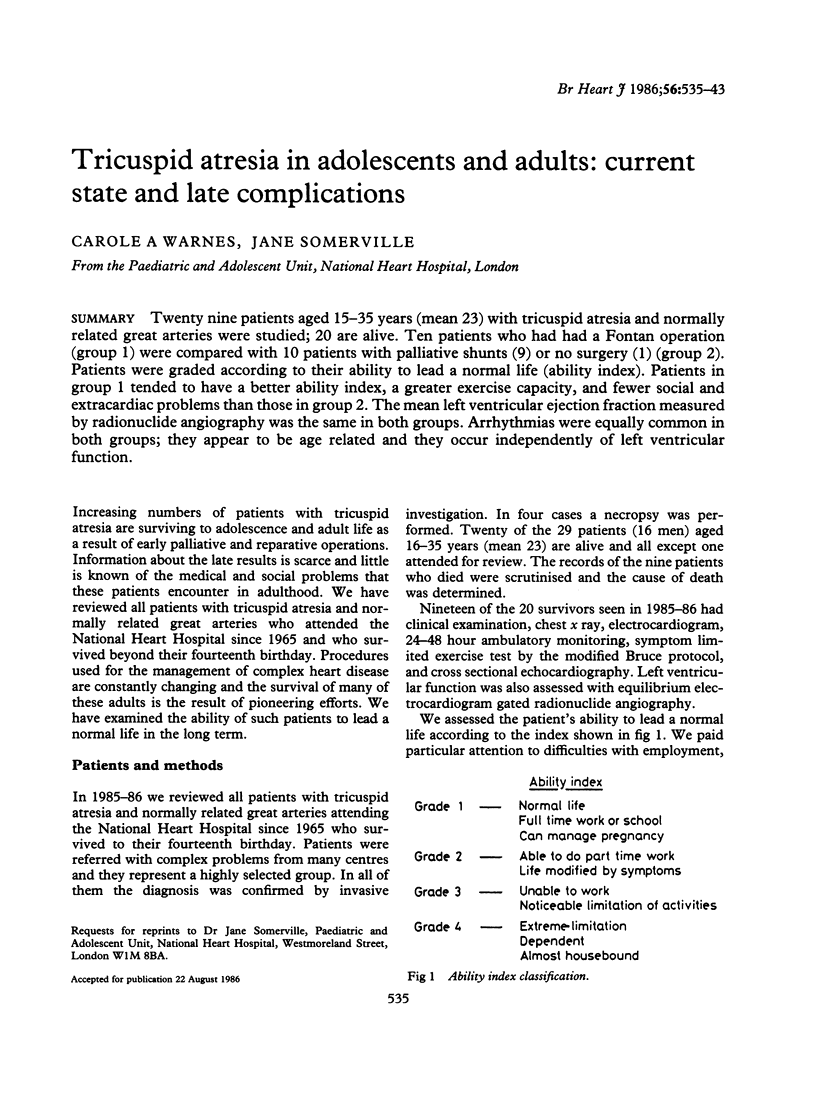
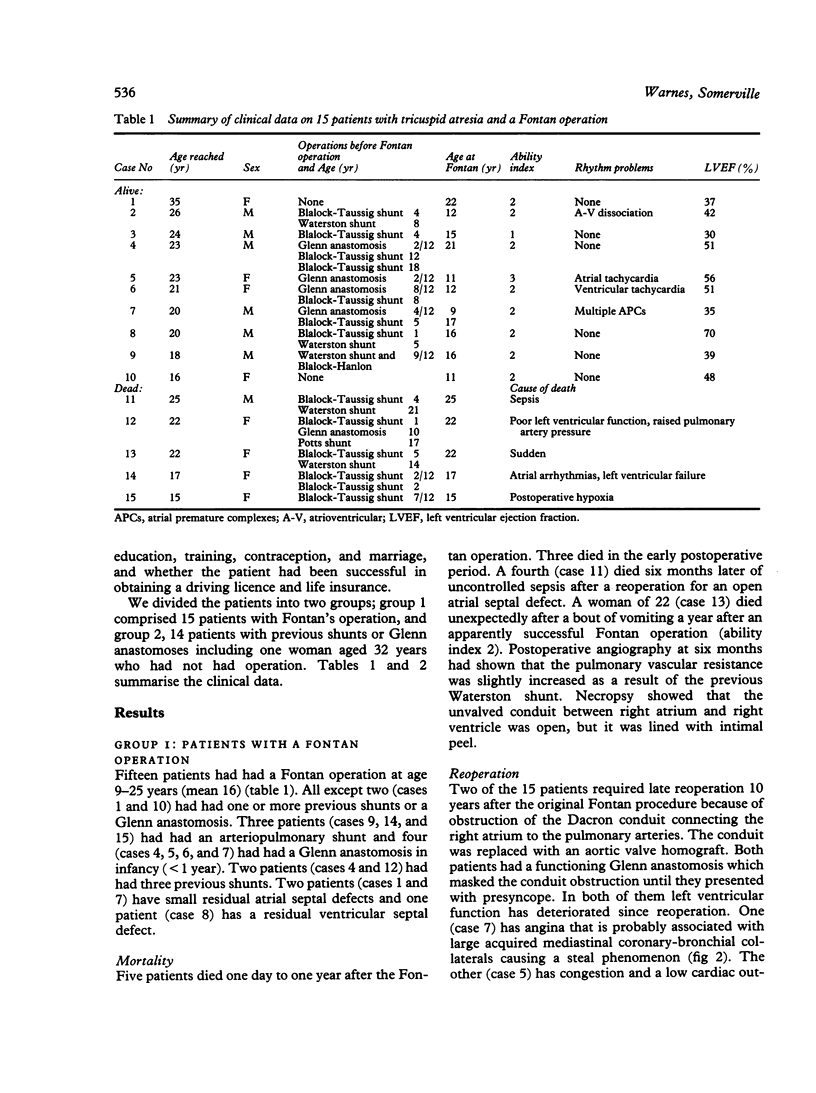
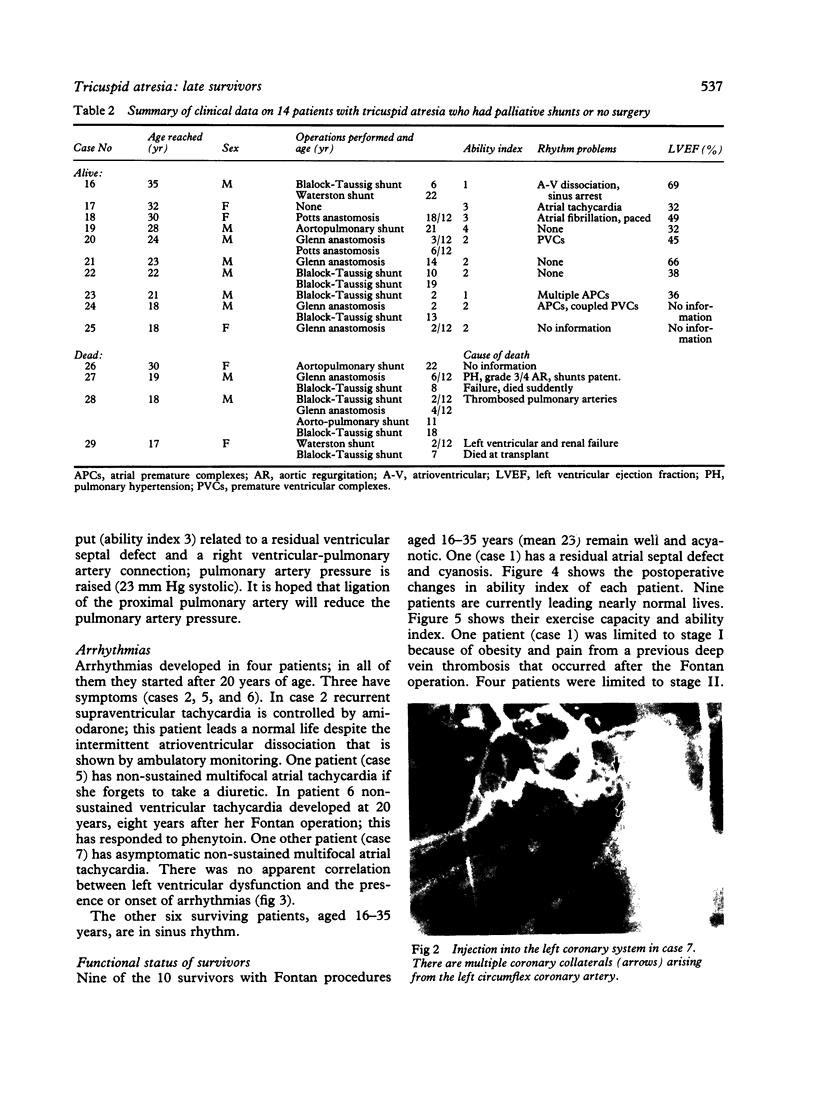
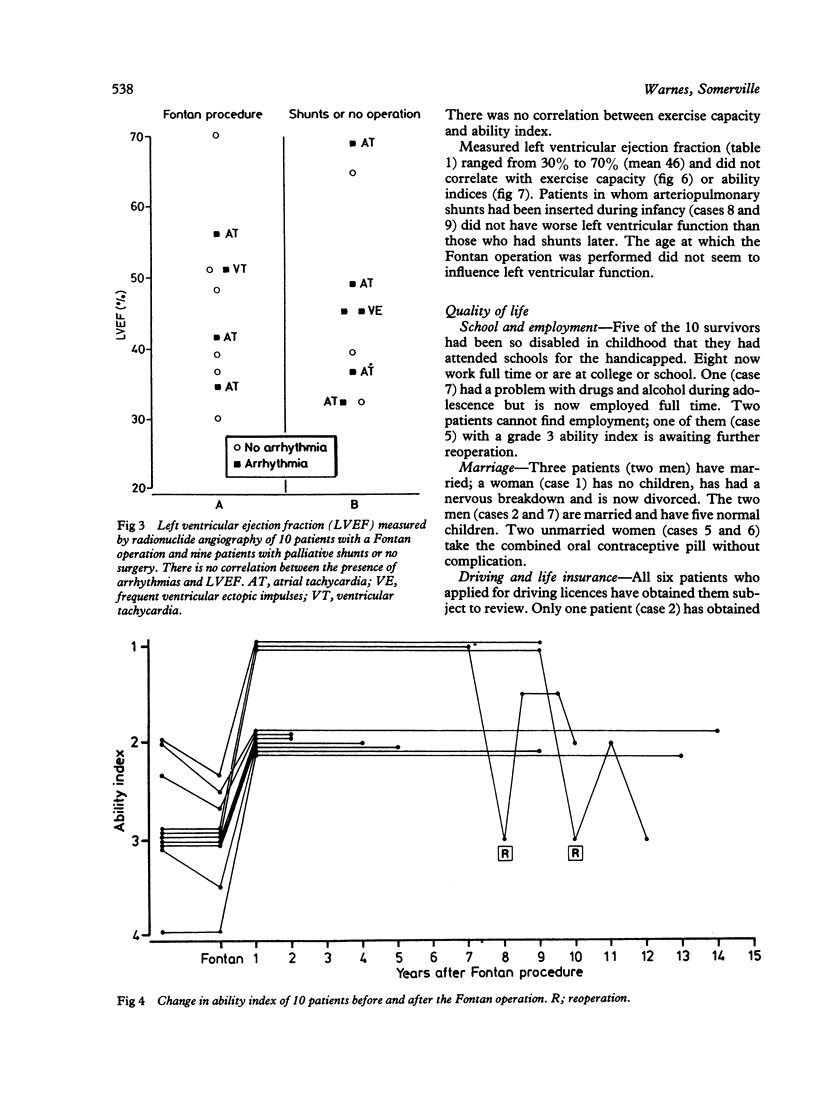
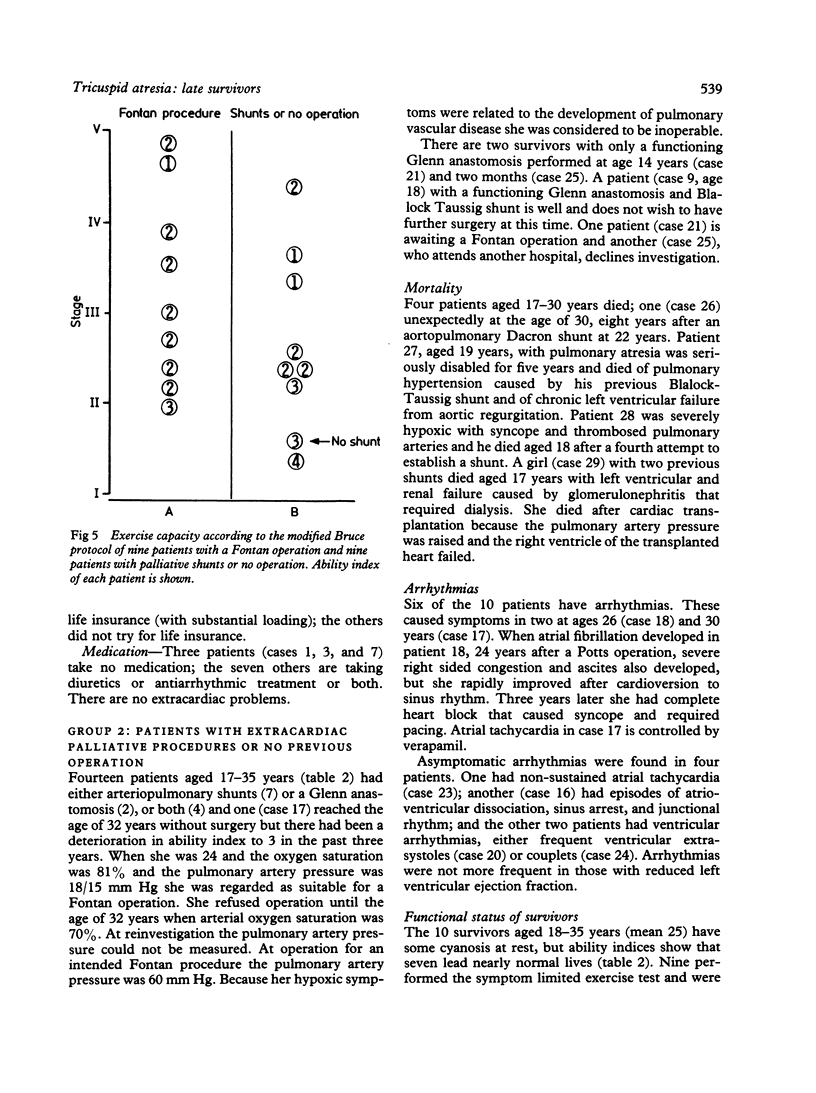
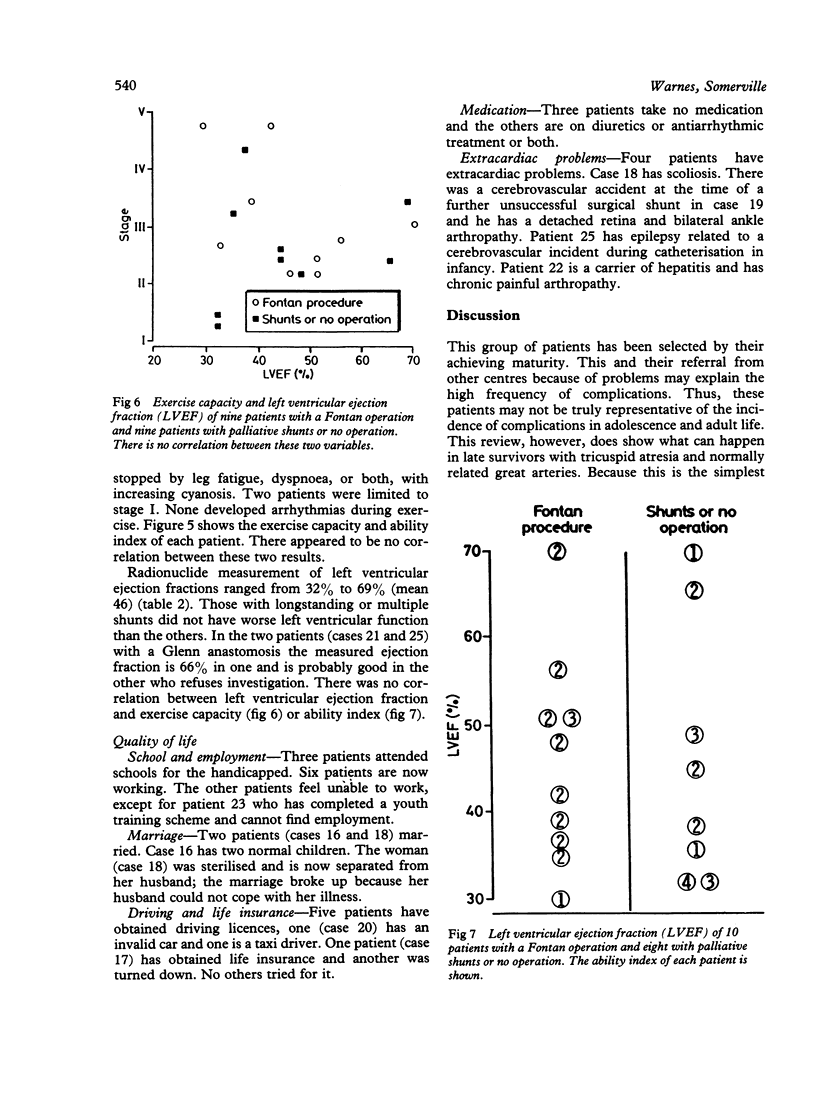
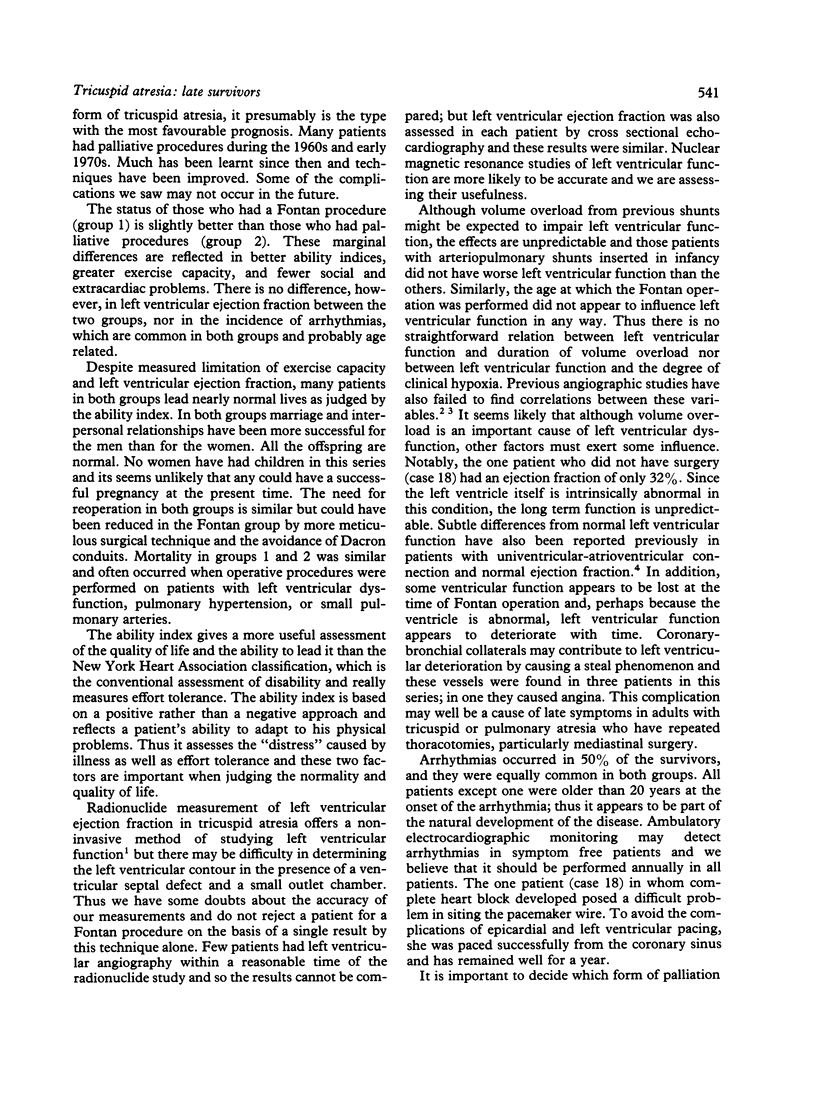
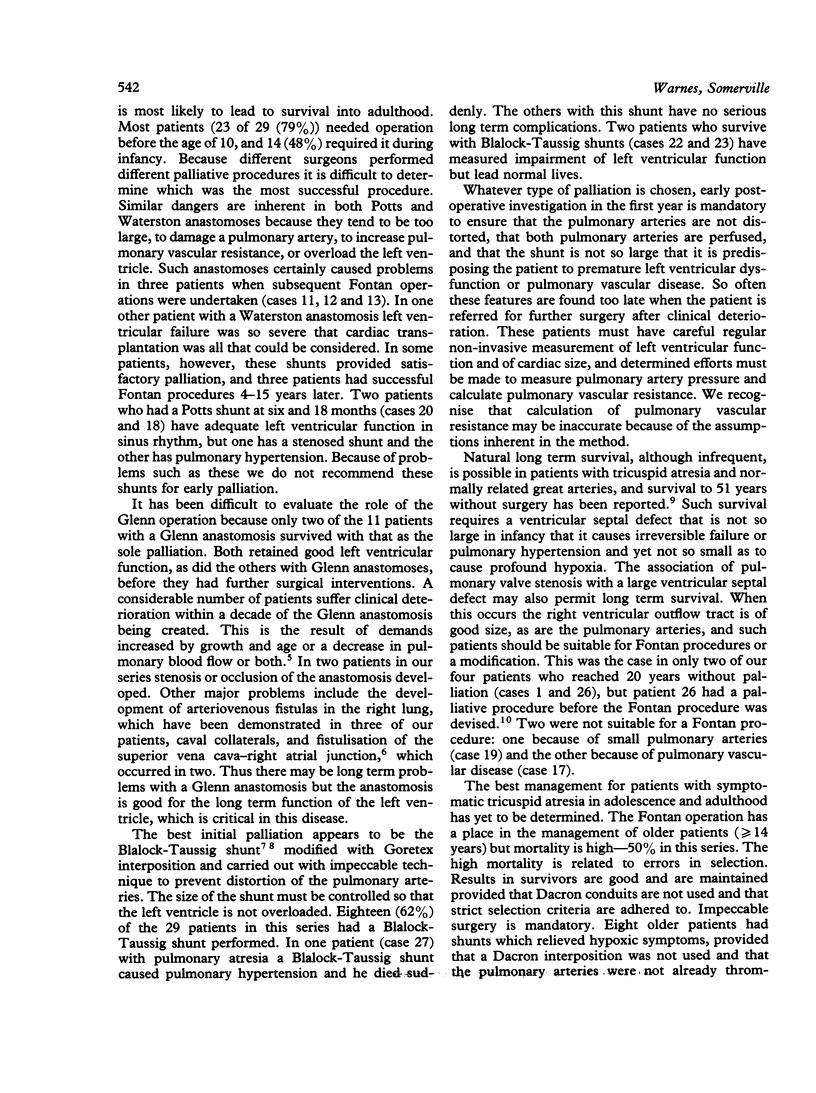
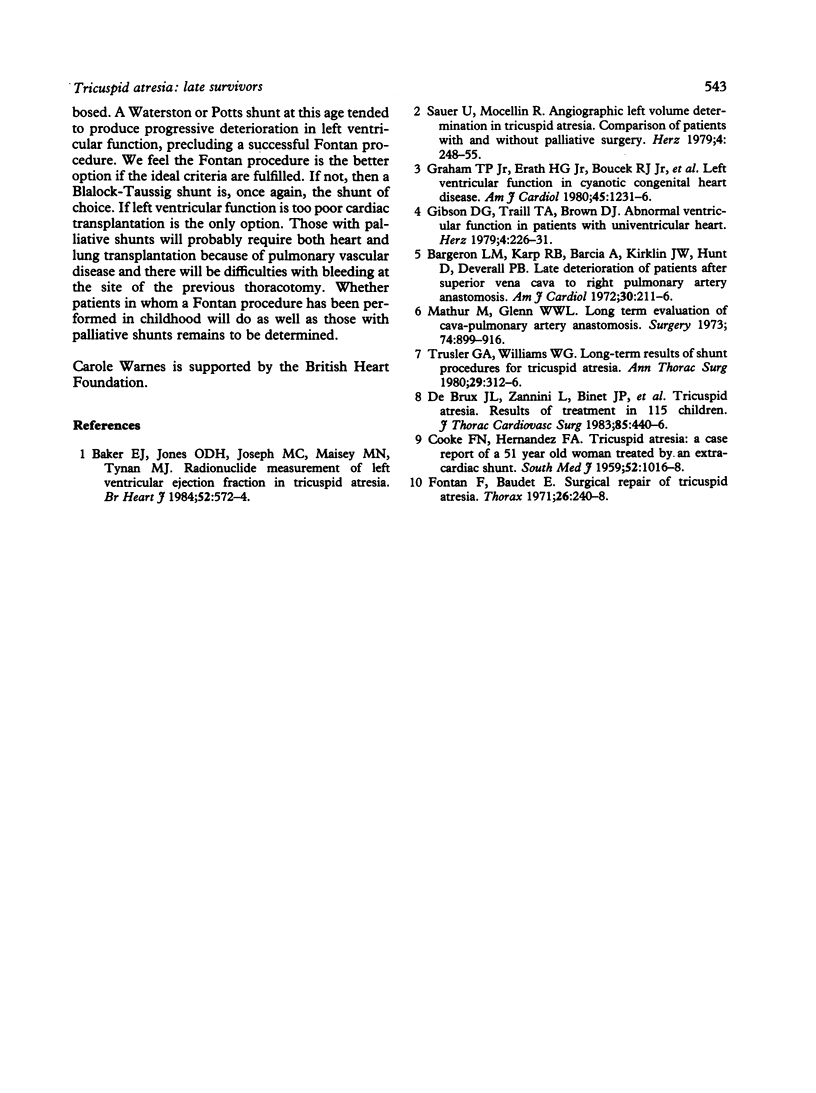
Images in this article
Selected References
These references are in PubMed. This may not be the complete list of references from this article.
- Baker E. J., Jones O. D., Joseph M. C., Maisey M. N., Tynan M. J. Radionuclide measurement of left ventricular ejection fraction in tricuspid atresia. Br Heart J. 1984 Nov;52(5):572–574. doi: 10.1136/hrt.52.5.572. [DOI] [PMC free article] [PubMed] [Google Scholar]
- Bargeron L. M., Jr, Karp R. B., Barcia A., Kirklin J. W., Hunt D., Deverall P. B. Late deterioration of patients after superior vena cava to right pulmonary artery anastomosis. Am J Cardiol. 1972 Aug;30(3):211–216. doi: 10.1016/0002-9149(72)90060-4. [DOI] [PubMed] [Google Scholar]
- COOKE F. N., HERNANDEZ F. A. Tricuspid atresia: a case report of a 51 year old woman treated by an extracardiac shunt. South Med J. 1959 Sep;52:1016–1018. doi: 10.1097/00007611-195909000-00003. [DOI] [PubMed] [Google Scholar]
- Fontan F., Baudet E. Surgical repair of tricuspid atresia. Thorax. 1971 May;26(3):240–248. doi: 10.1136/thx.26.3.240. [DOI] [PMC free article] [PubMed] [Google Scholar]
- Gibson D. G., Traill T. A., Brown D. J. Abnormal ventricular function in patients with univentricular heart. Cineangiographic study. Herz. 1979 Apr;4(2):226–231. [PubMed] [Google Scholar]
- Graham T. P., Jr, Erath H. G., Jr, Boucek R. J., Jr, Boerth R. C. Left ventricular function in cyanotic congenital heart disease. Am J Cardiol. 1980 Jun;45(6):1231–1236. doi: 10.1016/0002-9149(80)90483-x. [DOI] [PubMed] [Google Scholar]
- Mathur M., Glenn W. W. Long-term evaluation of cava-pulmonary artery anastomosis. Surgery. 1973 Dec;74(6):899–916. [PubMed] [Google Scholar]
- Sauer U., Mocellin R. Angiocardiographic left ventricular volume determination in tricuspid atresia. Comparison of patients with and without palliative surgery. Herz. 1979 Apr;4(2):248–255. [PubMed] [Google Scholar]
- Trusler G. A., Williams W. G. Long-term results of shunt procedures for tricuspid atresia. Ann Thorac Surg. 1980 Apr;29(4):312–316. doi: 10.1016/s0003-4975(10)61477-4. [DOI] [PubMed] [Google Scholar]
- de Brux J. L., Zannini L., Binet J. P., Neveux J. Y., Langlois J., Hazan E., Planche C., Leca F., Marchand M. Tricuspid atresia. Results of treatment in 115 children. J Thorac Cardiovasc Surg. 1983 Mar;85(3):440–446. [PubMed] [Google Scholar]



